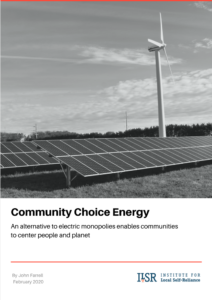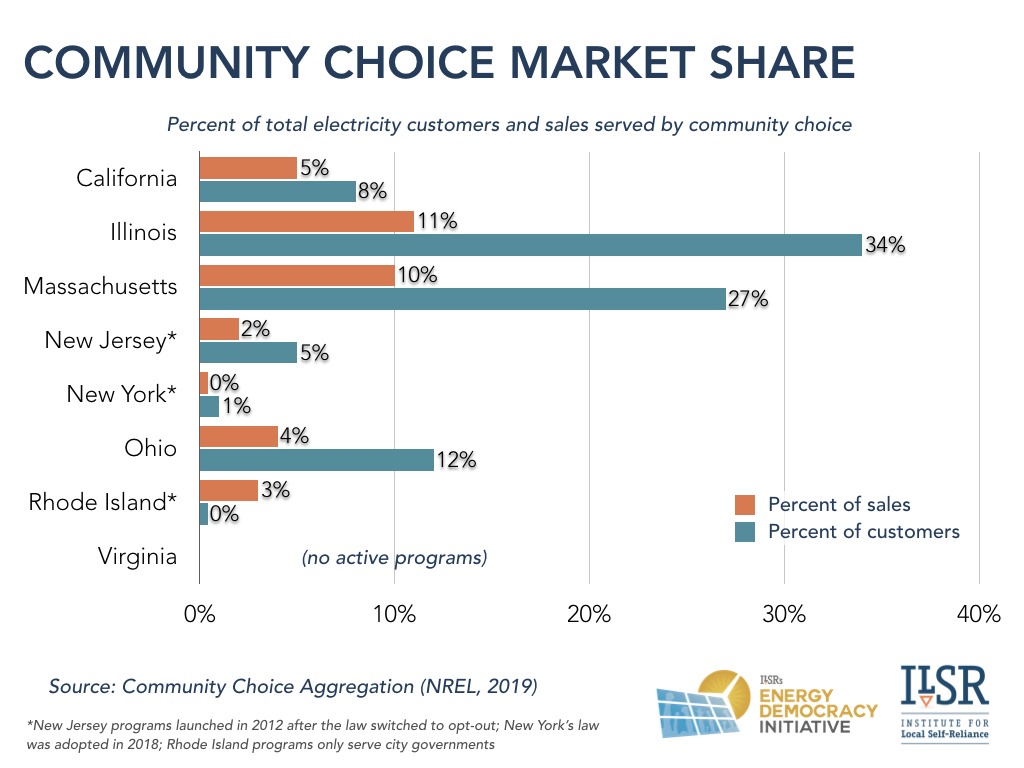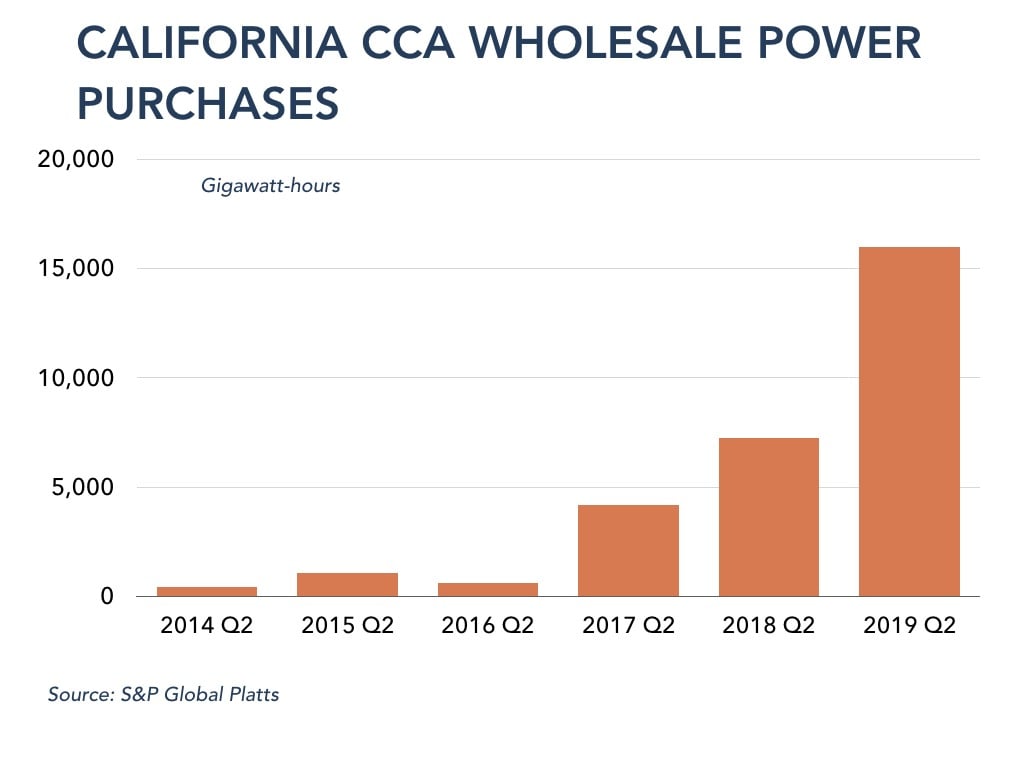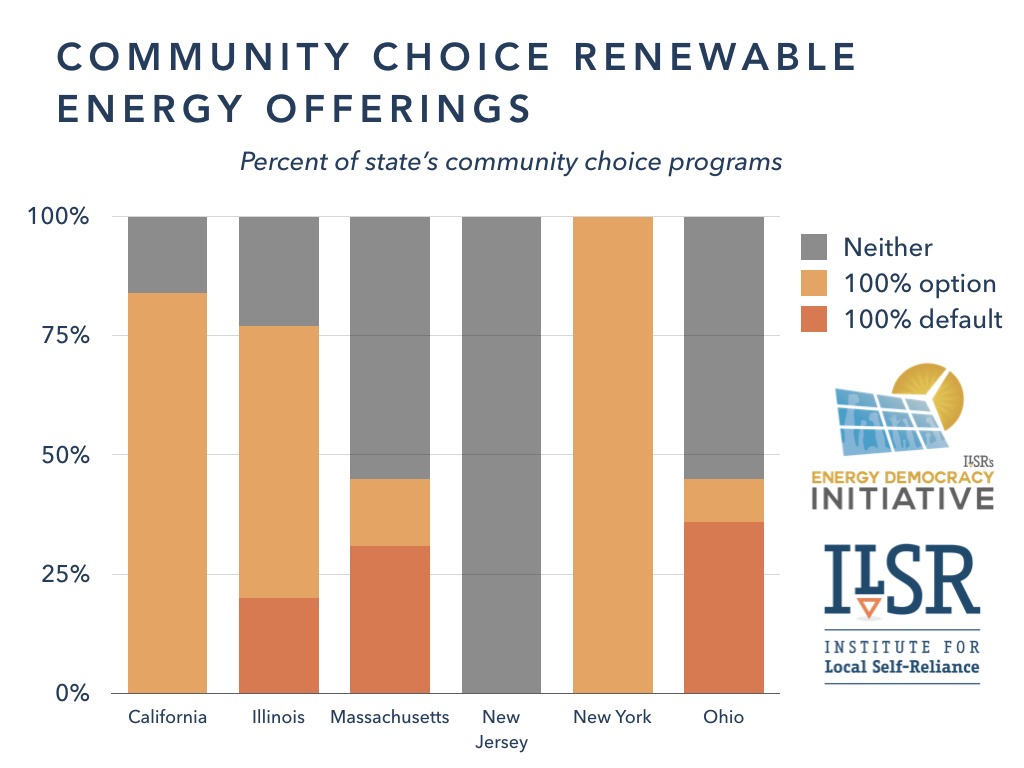Report: Community Choice Energy
Originally published at ILSR.org
An alternative to electricity monopolies enables communities to center people and planet
Key Links
- Download the Report
- Register for a webinar on the report, March 5th, 2020 at 12pm CT
 Executive Summary
Executive Summary
More communities than ever want to exercise control over their energy systems. In 2016, Americans collectively spent $360 billion buying electricity. Most of the revenue accrued to the benefit of increasingly-large, investor-owned utilities. Inspired by the individuals who put solar on their roofs, cities, counties, and states want the option to take charge and more widely share the financial and economic benefits of the clean energy transition. It’s why an increasing number of states have allowed community choice energy.
A Growing Power
Enabled by law in nine states, numerous cities are exercising their right to purchase energy on behalf of millions of electricity customers. Community choice simplifies the more widely available tool of a utility takeover by allowing communities to make energy supply decisions without buying the poles and wires of the existing electric utility. The following chart illustrates the market share of community choice programs by state (New Hampshire is not shown, since its policy was adopted in July 2019).
In three states, in particular, community choice is growing rapidly. In California, for example, the share of sales to electricity customers rose from 5% to 18% in the last year alone. In New York, nearly fifty municipalities have joined community choice programs in the past year. In Massachusetts, 150 communities have joined since 2015.
Going Deeper
While many community choice programs have modest ambitions to lower energy costs through economies of scale, a growing number of programs have expanded their scope to include:
- Facilitating ambitious energy efficiency programs
- Accelerating adoption of renewable energy
- Investing in local renewable energy projects
- Prioritizing local economic development
- Incorporating more community governance
- Integrating with city energy, economic development, and environmental planning
- Helping low-income residents access economic opportunities
For example, the following chart shows that many community choice programs offer 100% renewable electricity by default or as an option.
California Exceptionalism
In no state have community choice programs shown more ambition than in California, a complement to its rapid and expansive growth. This report explores several factors leading to California’s exceptional choice agencies and several ways it continues to push the limits of public power, including:
- Struggling with incumbent monopoly utilities at the legislature, the regulatory commission, and on the ballot for the right to community choice.
- Building larger aggregations of communities than in most other states, and then banding together in a statewide trade organization.
- Signing long-term contracts enabling the construction of new renewable energy resources.
- Advancing planning and energy management by integrating with city zoning, permitting, and other local authority.
- Sparking a regulatory revolution to accommodate the likely shift of a majority of electric customers to community choice by the end of 2020.
To read the rest, download a pdf of the report.
This article originally posted at ilsr.org. For timely updates, follow John Farrell on Twitter, our energy work on Facebook, or sign up to get the Energy Democracy weekly update.
Have a tip for CleanTechnica? Want to advertise? Want to suggest a guest for our CleanTech Talk podcast? Contact us here.
Latest CleanTechnica.TV Video

CleanTechnica uses affiliate links. See our policy here.



